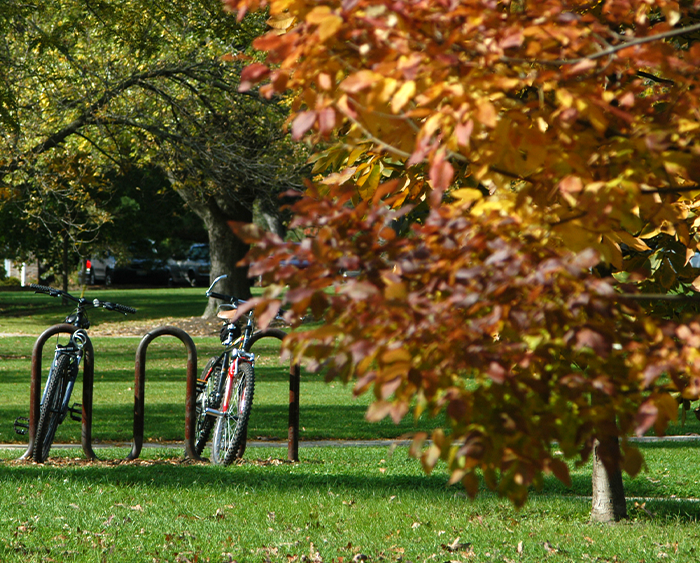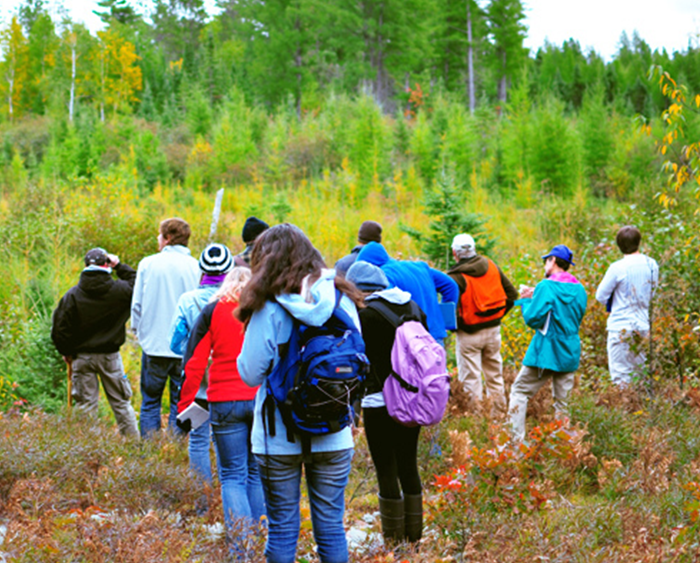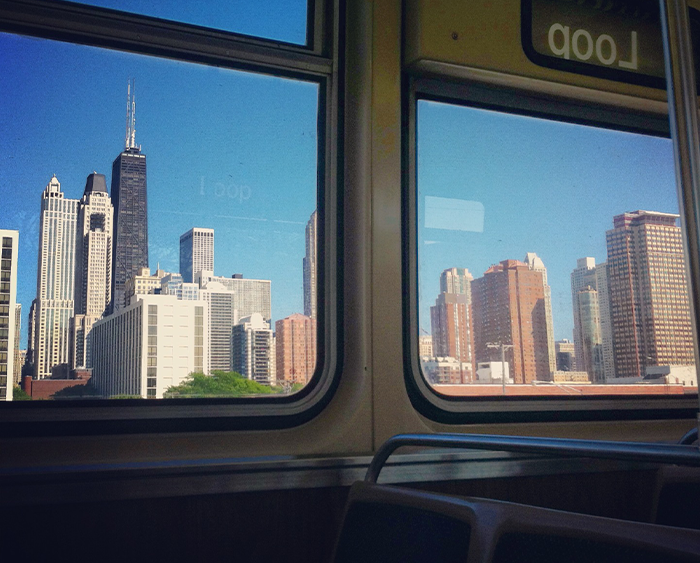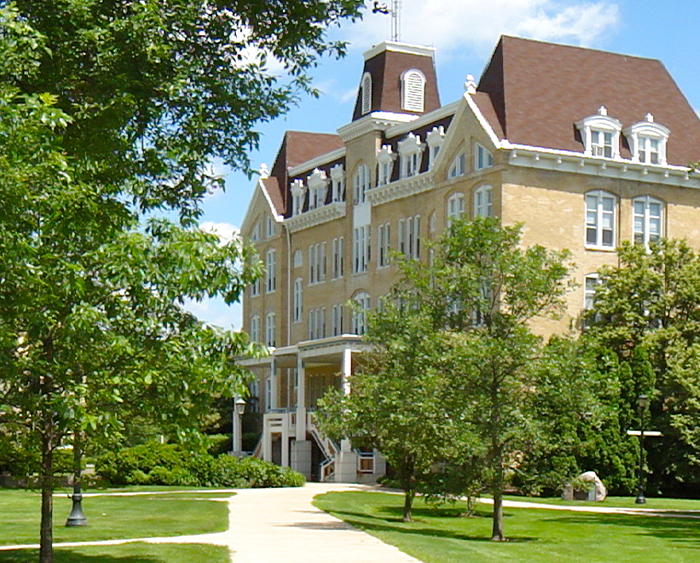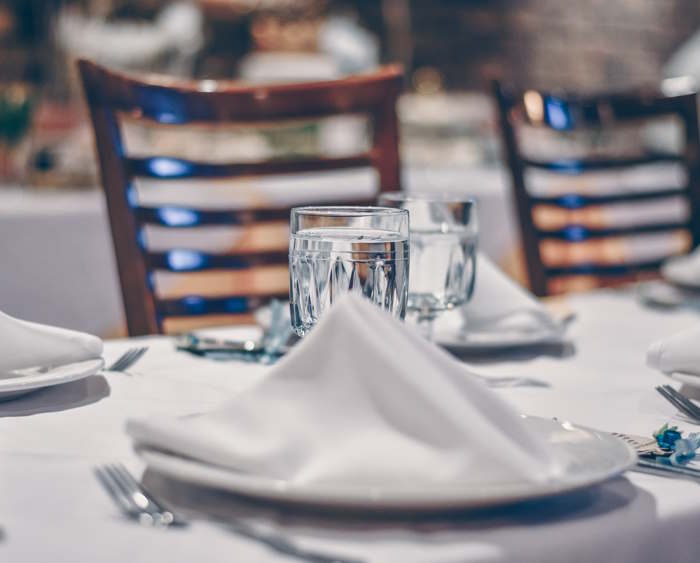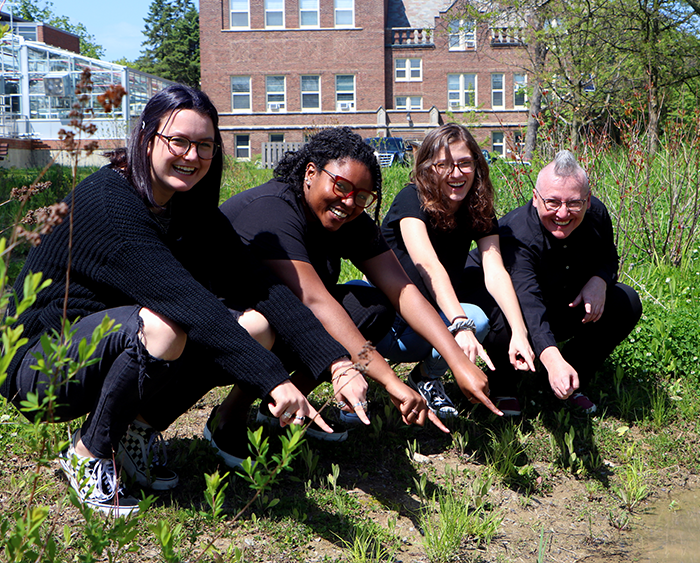Helping to sustain the world’s ecosystem by working locally to preserve our native species—some of the rarest in the world—and to reduce our environmental footprint is a core value at Lake Forest College.
As part of our mission statement, we have long pledged to prepare our students to become responsible citizens of the global community. We include sustainability in that endeavor because harm to our shared global ecosystem impacts people irrespective of national boundaries.
By intentionally integrating sustainability practices into campus and by helping others in their quest to do the same, we strive to do our part to effect positive change in the world.
These efforts are largely student-led as they initiated the creation of the Green Fund to support sustainability efforts on campus through their own student fees.
Lake Forest College has a distinguished history of ecosystem revitalization and ravine protection. With student, faculty, and staff restorationists, the College is pursuing a long-term plan to replace exotics with native species. Most notably, the campus has undertaken three distinct restoration efforts that have converted non-native to native plantings. Aside from their curricular uses, these three restorations elevate campus biodiversity, reduce the institution’s carbon footprint and its dependency on toxic lawn treatments, and mitigate stormwater runoff into the ravines.
Dating back to the early 1990s, Shooting Star Savanna is the college’s longest-running restoration project. Named for the charismatic spring wildflower whose population has grown dramatically there (Dodecatheon meadia), this preserve includes walking trails and a Jens Jensen-style council ring. It is home to the highest level of plant biodiversity on campus, as well as fauna such as a nesting pair of Great Horned Owls. Continued stewardship includes controlling the spread of Vinca, Buckthorn, and Honeysuckle, as well as removing Sugar Maple, Ash, and Basswood saplings which have the potential to turn the site, over time, into closed canopy woodland.
The successful Revery Prairie restoration on a half-acre in the heart of Middle Campus dates to 2013. Known as Revery – after Emily Dickinson’s poem “To make a prairie it takes a clover and one bee” – this site has benefited from the professional expertise of landscape architect P. Clifford Miller, who designed a savannah seed mix for the site and installed potted native plants in strategic zones around the preserve. Every summer, student restoration workers remove invasive species, maintain the path, and plant rare natives such as Asclepias sullivanti. The matrix of native plants soon should be sufficiently tight to exclude the exotics with minimal human intervention.
The McClure Rain Garden that opened in 2018 serves as an outdoor teaching space with many unique species. Pickerel weed (a native ornamental aquatic plant) bloomed there for the first time in summer 2019, and the garden is also home to amphibians, insects, waterfowl and songbirds.
Our campus watershed feeds rapidly into nearby Lake Michigan through ecologically diverse natural ravines. Over the past decade, the College has installed a variety of green infrastructure that minimizes stormwater runoff, including a rooftop garden at the Lillard Science Center (2018), McClure Rain Garden on Middle Campus (2017), and a rain garden by Hixon Field on South Campus (2014). Shooting Star Savanna and Revery Prairie also aid in mitigating stormwater runoff into the ravines.
An artificial turf athletic field first installed in 1998 (and updated in 2017), along with a new artificial turf lacrosse field slated to open in 2020, both reduce water usage while also eliminating pesticide, herbicide, and fertilizer runoff into local watersheds. The College has also reduced ice and snow melt use across campus which has reduced pollutant runoff into local watersheds.
Renovations to Buchanan Hall (originally constructed in 1927) made it the College’s first LEED certified building in 2007, with such eco-friendly features as water-efficient landscaping that minimizes runoff and dual-flush toilets. More broadly, the College’s installation of dual-flush toilets and low-flow faucets and showerheads reduces water consumption on campus.
All College facilities contain multiple clearly labeled single-stream recycling bins to reduce paper, glass, and metal waste sent to landfills. Information Technology Services and campus organizations recycle electronic waste, and Facilities Management collects batteries for responsible disposal.
To reduce paper usage on campus, the College has installed electric hand dryers in restrooms and all printers default to double-sided printing. After just one year after installing multiple electric hand dryers, the College saved nearly $8,000 worth of paper towels.
The College has installed water bottle filling stations in all new construction since 2010 and has installed several more in older buildings, reducing the use and disposal of single-use bottles. Vending machines on campus offer a variety of drinks in more-readily recyclable aluminum cans – reducing harder to recycle single-use plastics.
Parkhurst, the College’s dining services provider, reduces the amount of food and non-biodegradable waste going to landfill by minimizing food preparation waste—including making vegetable, chicken, and beef stocks from scratch—and using compostable plates and bowls for catered events on campus. All food preparation scraps in our central dining hall are composted and used to enrich the soil in our student-run garden.
The League for Environmental Awareness and Protection (LEAP), the student-run environmental organization, organizes a freecycle clothing and item swap, a Move Out for Hunger program that prevents nonperishable food from ending up in landfills following residence hall move-out, and a used toothbrush collection and recycling drive with Terracycle.
Lake Forest College will receive 100 percent of its electricity from off-campus renewable energy sources in 2025.
Buchanan Hall became the College’s first LEED certified building in 2007, and the College has installed energy-efficient LED lighting in all new construction and renovations since 2018. When the College installed LED lighting in the campus gymnasium, hockey rink, and pool facilities in 2018, energy usage in those facilities dropped by 10%. Most recently, the library lighting system was updated with ultra-high-efficiency LED systems.
The College’s landscaping contractor adopted low-emissions landscaping equipment in 2017 that reduced fuel usage by more than 85% and inspired the City of Lake Forest to adopt the same practices. This includes electric leaf blowers and propane-powered mowers.
The College installed several solar-powered parking lot lights in 2018 and will install several more in the coming years.
Parkhurst, the College’s dining services provider, aims to reduce its carbon footprint by sourcing food locally when possible (reducing the distance food travels from farm to campus) and emphasizing plant-based foods that support less carbon-intensive vegetarian and vegan diets.
The College encourages public and community transportation over the use of personal vehicles. Students and faculty can easily access downtown Chicago on public transportation. The College’s Center for Chicago Programs subsidizes class field studies to Chicago that utilize the commuter rail and Chicago Transit Authority (CTA) trains and buses.
Just minutes away from the Robert McClory bike trail, the College strongly encourages bicycle use. Facilities Management installed a bicycle maintenance tool kiosk on Middle Campus, and bicycle racks installed outside of each residence hall and academic building. The League for Environmental Awareness and Protection (LEAP), the student-run environmental organization, organizes used bike sales on campus.
To encourage electric vehicle usage, the College has reserved several dedicated parking spaces near outlets for charging electric vehicles.
The College’s landscaping contractor’s switch to low-emissions electric equipment improved air quality and reduced noise pollution on campus.
The Environmental Studies Department, along with Biology, Chemistry, English, Sociology and Anthropology, Economics, and others, offers wide-ranging interdisciplinary curriculum on sustainability issues. Courses in both the College’s Environmental Studies and Biology Departments use campus as a learning laboratory: the greenhouse that opened in Lillard Science Center in 2019 supplements Shooting Star Savanna, Revery Prairie, McClure Rain Garden, the student garden at Glen Rowan House, and the ravines that run through campus.
In 2016, Student Government instituted a “Green Fund” gathered from student activity fees to pursue sustainability initiatives on campus. The Sustainability Committee—composed of students, faculty, and staff—administers the Green Fund and advises various campus entities on sustainability issues.
The College’s organic garden at Glen Rowan House began in 2010. Pesticide, herbicide, and synthetic fertilizer-free, the garden is run entirely by students who learn on the job by purchasing seeds and tools, managing the compost system, cultivating the garden, and selling produce both on campus and in the City of Lake Forest.
The League for Environmental Awareness and Protection (LEAP), a student-run organization that focuses on increasing sustainability in the campus community, organizes several annual campus-wide events including a Sustainability Trivia Night, a Water Awareness Campaign during World Water Week, and Earth Week programming each April.
Lake Forest College will receive 100 percent of its electricity from off-campus renewable energy sources in 2025.
Sustainability Guiding Principles
As part of the switch to make it 100 percent renewable electricity, the College adopted the following Sustainability Guiding Principles:
The Lake Forest College community works intentionally and strategically to fulfill our deep commitment to environmental sustainability and to stewardship of the ecosystem our beautiful campus is a part of.
We are committed to reducing our impact on future generations and on communities that are disproportionately exposed to environmental harms. As an academic institution, our efforts are guided by the consensus of the scientific community. As an educational institution, we empower our students through teaching, research, and modeling best practices to be sustainability leaders in their careers and communities. This commitment is evident in our efforts to reduce our contribution to climate change both boldly and rapidly as we work toward carbon-neutral electricity by 2030.
Campus leaders embrace a culture of environmental sustainability in planning and action, making our campus increasingly energy and water-efficient, reducing our waste through reuse, recycling, and composting, and restoring and expanding native habitats.


